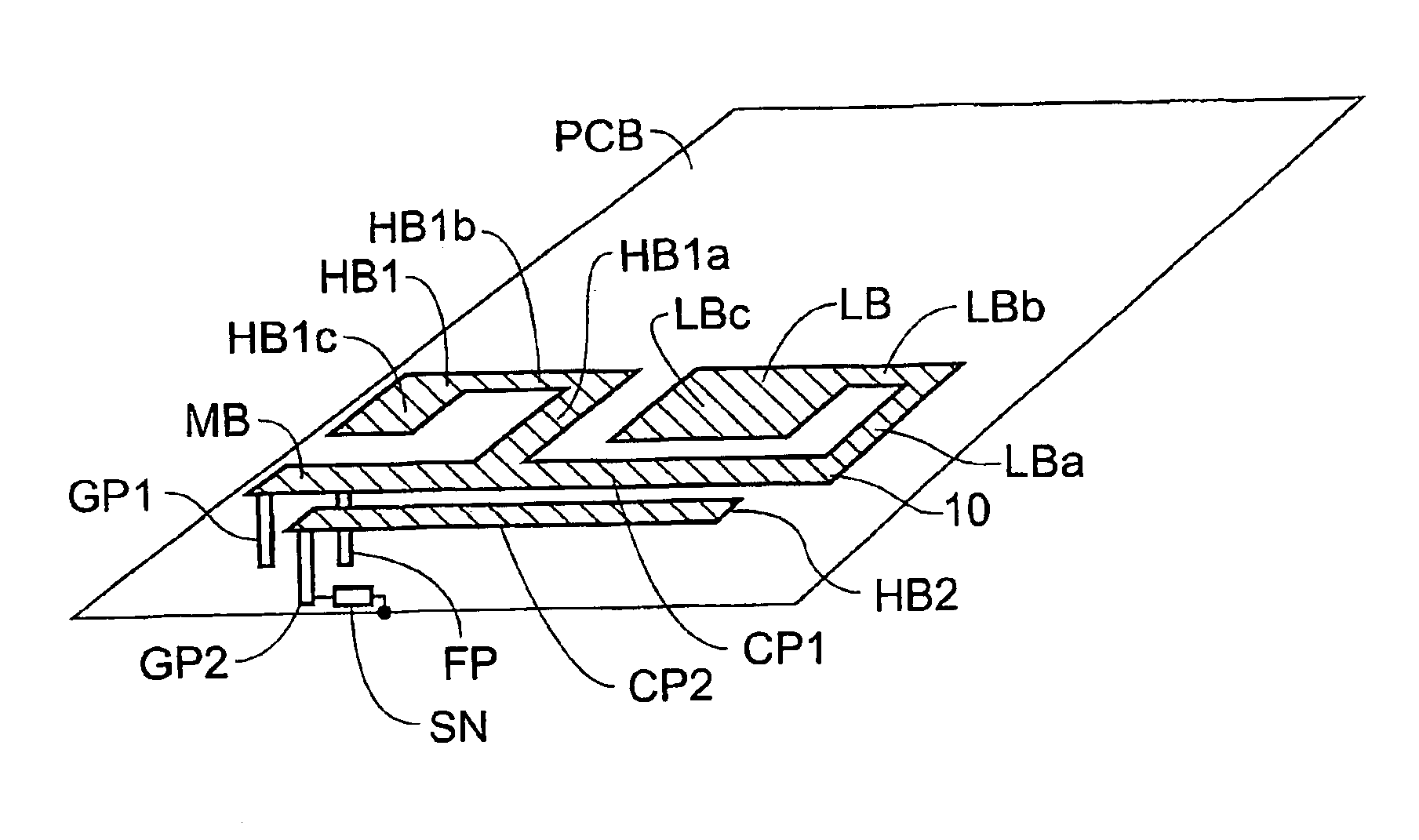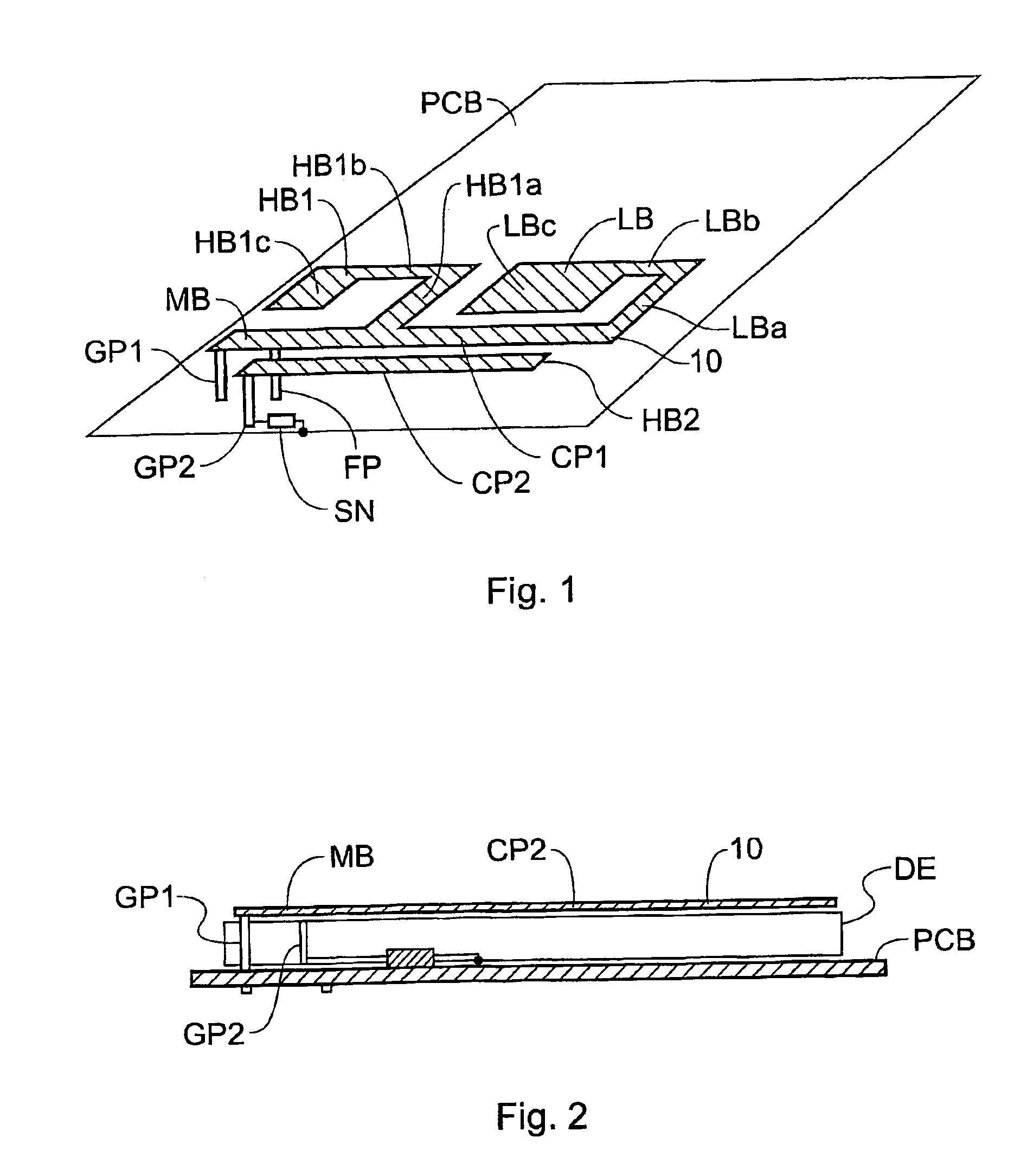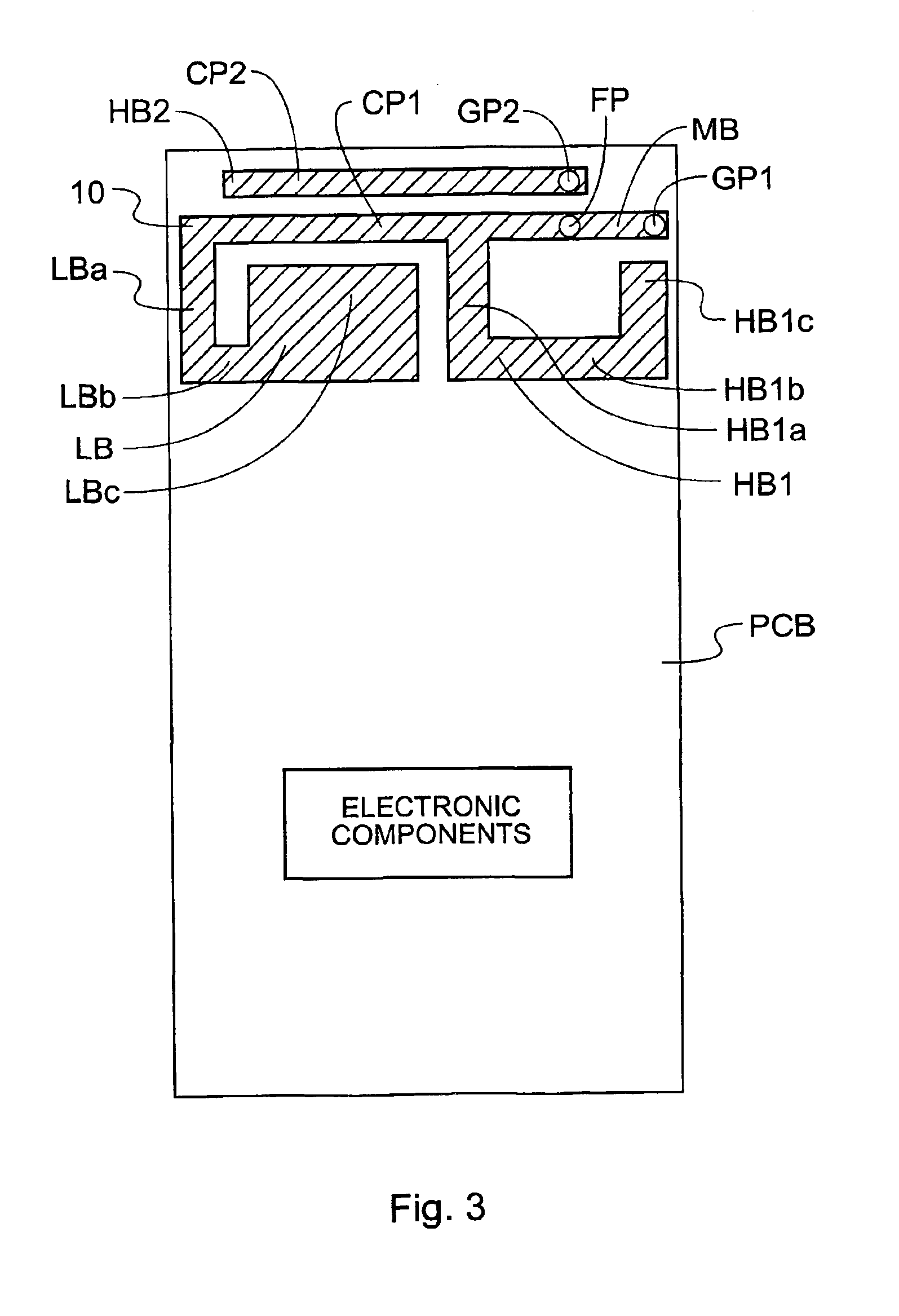Mobile communication device
a mobile phone and communication device technology, applied in the direction of resonant antennas, radiating element structural forms, antenna supports/mountings, etc., can solve the problem that an antenna of this type is too large to be conveniently used in a small mobile phon
- Summary
- Abstract
- Description
- Claims
- Application Information
AI Technical Summary
Benefits of technology
Problems solved by technology
Method used
Image
Examples
Embodiment Construction
[0018]The antenna according to the invention is described with reference to its use in a mobile phone. However, the invention is generally applicable to portable radio communication equipment or mobile radio terminals, such as mobile telephones, pagers, communicators, electronic organisers, smartphones, personal digital assistants (PDAs), or the like.
[0019]FIGS. 1-3 show a printed circuit board PCB with an antenna 10 according to the invention, suitable for use in a mobile telephone. In the illustrated embodiment, the printed circuit board has a rectangular shape, but of course the invention is not restricted to the use of a rectangular shape. In practice, the printed circuit board will have a number of electronic components mounted thereon, which are necessary for the operation of the mobile telephone, but which are not part of the invention. In FIG. 3 such components are therefore indicated only schematically.
[0020]In FIGS. 1-3 an electrically conductive material, such as copper, ...
PUM
 Login to View More
Login to View More Abstract
Description
Claims
Application Information
 Login to View More
Login to View More - R&D
- Intellectual Property
- Life Sciences
- Materials
- Tech Scout
- Unparalleled Data Quality
- Higher Quality Content
- 60% Fewer Hallucinations
Browse by: Latest US Patents, China's latest patents, Technical Efficacy Thesaurus, Application Domain, Technology Topic, Popular Technical Reports.
© 2025 PatSnap. All rights reserved.Legal|Privacy policy|Modern Slavery Act Transparency Statement|Sitemap|About US| Contact US: help@patsnap.com



